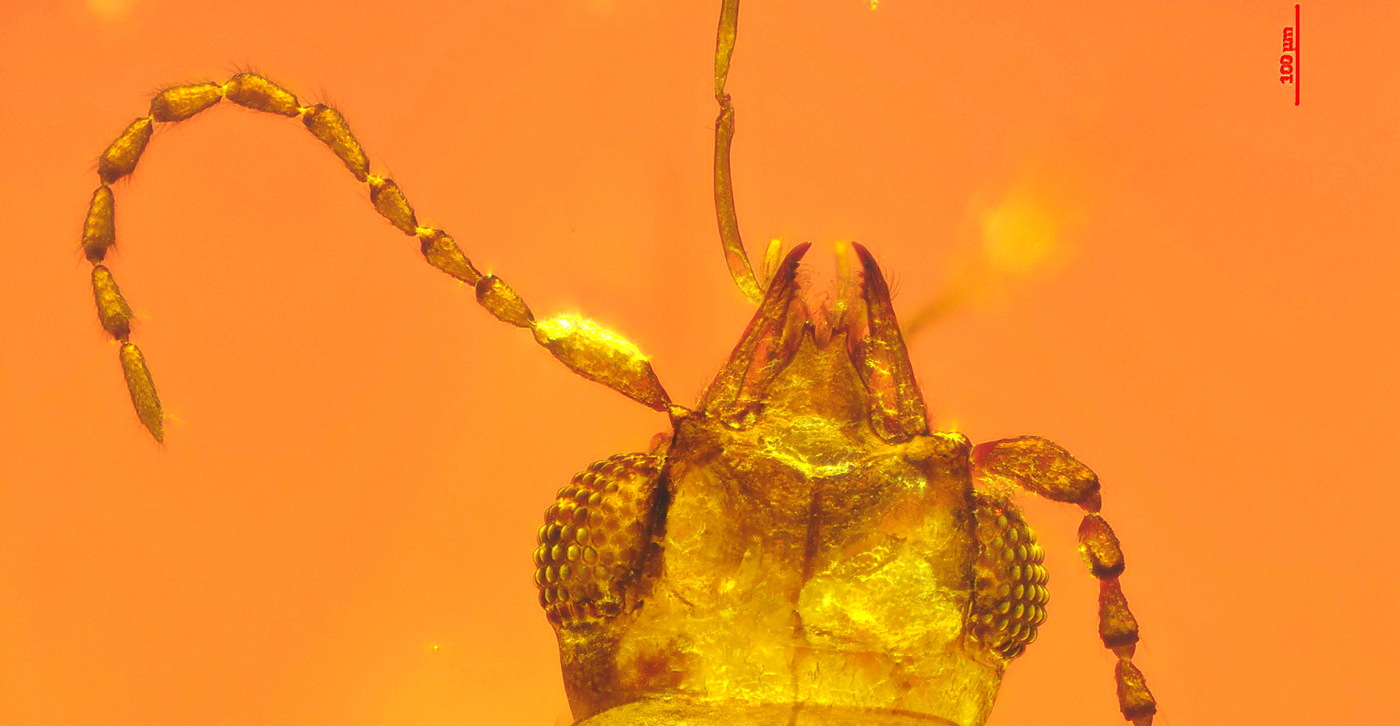Back when dinosaurs roamed the Earth, cycads dominated the plant life. Cycads are gymnosperms that are characterized by “naked” seeds, often in cones. Modern examples are conifers and Ginkgo, which are pollinated by the wind. Later in geologic time flowering plants (angiosperms) dominated; they are mostly pollinated by flying insects such as bees and butterflies. Interestingly cycads are pollinated typically by beetles. Today there are more than 380,000 named species of beetles constituting almost 25% of known life forms on our planet. A relatively small family of beetles, the Broganiidae, is characterized by large mouthparts that are specialized for pollination. Today broganiids are found in nature only in the Southern hemisphere, leading to the suggestion that they evolved before the eventual breakup of the ancient supercontinent of Gondwana about 167 million years ago to form our continents.
Although it is well documented that cycads were diverse and abundant during the mid-Mesozoic era when Gondwana began splitting, little is known about their distribution and pollination before the rise of angiosperms. The recent discovery of a beetle in a piece of amber from Myanmar (Figure 1), by Chenyang Cai and an international team of scientists [Reference Cai1], may fill in some of the gap in this knowledge.
The fossil record for these small (2 mm long) beetles and cycad pollen grains (20 µm long) is very sparse because of the rarity of preserving them in a manner that reveals morphologic detail. Cai et al. solved this problem by examining extant boganiid beetles. Using scanning electron microscopy, they demonstrated the presence of small cavities in mouth parts (specifically the mandible) of these beetles. The cavities contained bristles that facilitate the transfer of pollen between plants (Figure 2).

Figure 1: Light microscope image of dorsal view of Cretoparacucujus cycadophilus in amber showing mandibular cavities. Image width = 2 mm.

Figure 2: Scanning electron microscope image of right mandible of the extant Paracucujus rostratus. Image width = 700 µm.
The piece of amber examined by Cai et al. was determined to be about 99 million years old. The mouth parts of the beetle were examined by light microscopy and were found to have characteristics of boganiid beetles. These and other structures led Cai et al. to name this beetle as a new species, Cretoparacucujus cycadophilus. Cretoparacucujus was compared to modern beetles that pollinate gymnosperms in the Southern hemisphere.
Remarkably, several pollen grains are present in the same piece of amber. Although it was not possible to definitively identify these grains as coming from cycads, they may have. If this is the case, Cai et al. have demonstrated for the first time that insect pollination occurred much earlier in the fossil record than previously demonstrated. Since previous findings have shown that both beetles and cycads coexisted at least 250 million years ago, they may have been interacting even back then. This exciting new study suggests insect pollination occurred much earlier that previously thought! [2]





